The Benefits of Placing Your Mobile Phone Face Down
The orientation of your mobile phone when placed on a table may seem trivial, but it can significantly impact both the device and the user. Opting to position your phone face down when not in use offers several advantages:
1. Prevents Dust and Liquid from Damaging the Screen
Placing your phone with the screen facing up increases the likelihood of dust accumulating and adhering to the display. When cleaning, coarse dust particles may inadvertently scratch the screen or tempered glass.
Additionally, accidental spills or food particles can come into contact with the screen, potentially affecting its clarity and responsiveness. By keeping the phone face down, you reduce exposure to these risks and help maintain the display’s longevity.
2. Protects the Camera Lens from Scratches
Many modern smartphones feature protruding rear camera lenses, such as those on the iPhone 14 Pro Max. Placing the phone face up exposes the camera lenses to direct contact with the surface, increasing the risk of scratches. Scratched lenses can significantly degrade photo and video quality, affecting the overall user experience.
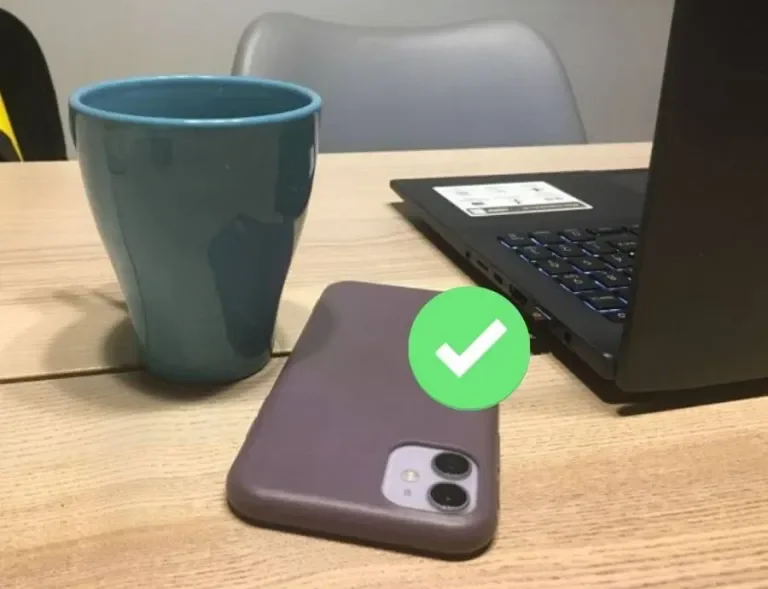
Some may worry about potential screen scratches when placing the phone face down. However, most smartphones today are equipped with anti-scratch coatings or tempered glass protection, minimizing this concern. In case of minor scratches, replacing the screen protector is relatively simple, whereas repairing a damaged camera lens can be more complex and costly.
To further protect your device, ensure that the table surface is clean and free from rough particles before placing your phone face down.
3. Enhances Privacy and Security
Leaving your phone face up can expose personal notifications and messages to anyone nearby. This may lead to unintended privacy breaches, especially when receiving sensitive information, such as financial alerts or confidential messages.
By placing the phone face down, you prevent others from seeing incoming notifications, thereby maintaining your privacy and security.
4. Reduces Distractions and Enhances Focus
A constantly lit screen with incoming notifications can be highly distracting, especially during work or study sessions. While notifications are useful, they can disrupt concentration and productivity.
Positioning the phone face down helps reduce distractions, allowing for better focus on tasks at hand. Alternatively, enabling Do Not Disturb mode or silencing notifications can further enhance concentration.
5. Minimizes Screen Damage in Your Pocket
When carrying your phone in a pocket, placing it face down can help prevent accidental screen damage caused by contact with keys, coins, or rough surfaces. Additionally, it reduces direct exposure to battery heat, which may cause discomfort or skin irritation.
Conclusion
Keeping your phone face down when not in use provides multiple benefits, from protecting the screen and camera to enhancing privacy and focus. Next time you set your phone down, consider flipping it over—it’s a simple habit that can make a significant difference.
If you found this information helpful, feel free to share it with friends and family!
Meu ex-marido ficou com nossa casa, carro e todo o nosso dinheiro depois do divórcio – eu ri porque era exatamente isso que eu planejei

Após um casamento amargo marcado pela obsessão de Mike com riqueza material, Nicole surpreendentemente concorda em dar tudo a ele em seu divórcio. Mas enquanto Mike se deleita com sua “vitória”, a risada de Nicole revela um plano secreto em andamento. O que Mike não sabe é que ela está prestes a fazer seu movimento final.
Saí do escritório do advogado com uma expressão vazia, meus ombros caídos, parecendo exatamente a ex-esposa derrotada. A chuva caía forte, e o céu cinza combinava com meu humor — ou pelo menos com o humor que eu queria que as pessoas pensassem que eu estava.

Uma mulher passando por uma janela | Fonte: Midjourney
Lá dentro, eu estava zumbindo. Minhas mãos apertaram o aço frio da maçaneta da porta enquanto eu me dirigia para o elevador. Não havia ninguém por perto. Ótimo.
A porta do elevador fechou atrás de mim com um leve ding, e assim que fiquei sozinha, soltei uma risadinha. Não foi algo que planejei; borbulhou lá do fundo como champanhe finalmente desarrolado.
Quanto mais eu pensava no que tinha acabado de fazer, mais a ideia aumentava, até que eu estava rindo no elevador como um louco.

Uma mulher rindo em um elevador | Fonte: Midjourney
Se alguém me visse naquele momento, pensaria que eu tinha finalmente enlouquecido, passado dos limites por causa de todo o estresse, mas, ah, não, isso era só o começo. Tudo estava se encaixando perfeitamente.
A casa, o carro, as economias — Mike poderia ter tudo isso. Era exatamente o que eu queria. Ele pensou que tinha vencido, e essa era a melhor parte. Ele não tinha a mínima ideia do que estava por vir.
O elevador parou com um solavanco, e eu me recompus. Olhei para meu reflexo na parede espelhada do elevador: cabelo bagunçado, olhos cansados e um leve sorriso ainda pairando em meus lábios. Eu nem me importei. Isso seria divertido.

Uma mulher em um elevador | Fonte: Midjourney
Algumas semanas antes…
Mike e eu não éramos felizes há anos, mas não era apenas o tipo normal de desamor. Mike era obcecado com sua imagem. Ele só pensava em carros chamativos, ter a maior casa do quarteirão e usar apenas roupas de grife.
Tudo isso era uma performance, e eu tinha desempenhado meu papel por tempo demais. As rachaduras começaram a aparecer, e quando as discussões se tornaram mais frequentes, eu sabia que não demoraria muito para que o inevitável acontecesse.

Uma mulher atenciosa | Fonte: Midjourney
A questão é que eu não estava com medo do divórcio. Eu conhecia Mike, e sabia exatamente como isso iria acontecer.
Ele não se importava em salvar o casamento. Não, o que ele queria era vencer — vencer a casa, vencer o dinheiro, vencer o divórcio.
Tudo o que eu queria era me livrar desse estilo de vida pretensioso. Mas isso não significava que eu iria deixá-lo me ferrar também. Então, eu deixaria Mike ter o que ele queria, mas com uma pegada tão afiada quanto um anzol.

Uma mulher atenciosa | Fonte: Midjourney
Aconteceu numa terça-feira. Mike chegou tarde em casa, de novo. Eu estava na cozinha, fingindo rolar a tela do meu celular, sem me dar ao trabalho de olhar para cima quando ele entrou furioso.
“Precisamos conversar.”
Suspirei, mal mascarando o tédio na minha voz. “E agora?”
Ele bateu as chaves no balcão, e eu praticamente podia sentir a frustração irradiando dele. Ele sempre ficava assim quando as coisas não saíam do jeito que ele queria no trabalho, e, claro, eu era o alvo mais fácil.

Um homem irritado | Fonte: Midjourney
“Estou farto”, ele disse, sua voz baixa e firme. “Eu quero o divórcio.”
Pisquei para ele. Finalmente. Assenti lentamente, como se estivesse assimilando, mas, na verdade, eu estava preparada para esse momento há semanas.
“Ok”, eu disse simplesmente.
Ele franziu a testa, claramente surpreso. “Só isso? Sem briga? Sem implorar?”
Dei de ombros. “Qual é o ponto?”

Uma mulher olhando para a frente | Fonte: Midjourney
Por um segundo, ele pareceu confuso, como se eu tivesse tirado o vento de suas velas. Ele esperava resistência, esperava que eu implorasse para que ele ficasse.
Mas eu só precisava dar a ele corda suficiente para se enforcar.
As negociações do divórcio foram tão horríveis quanto eu esperava. Nós nos sentamos um de frente para o outro em uma sala de conferências estéril, advogados nos flanqueando, enquanto Mike delineava cada pequena coisa que ele queria. A casa, o carro, as economias; era como se ele estivesse lendo uma lista de compras.
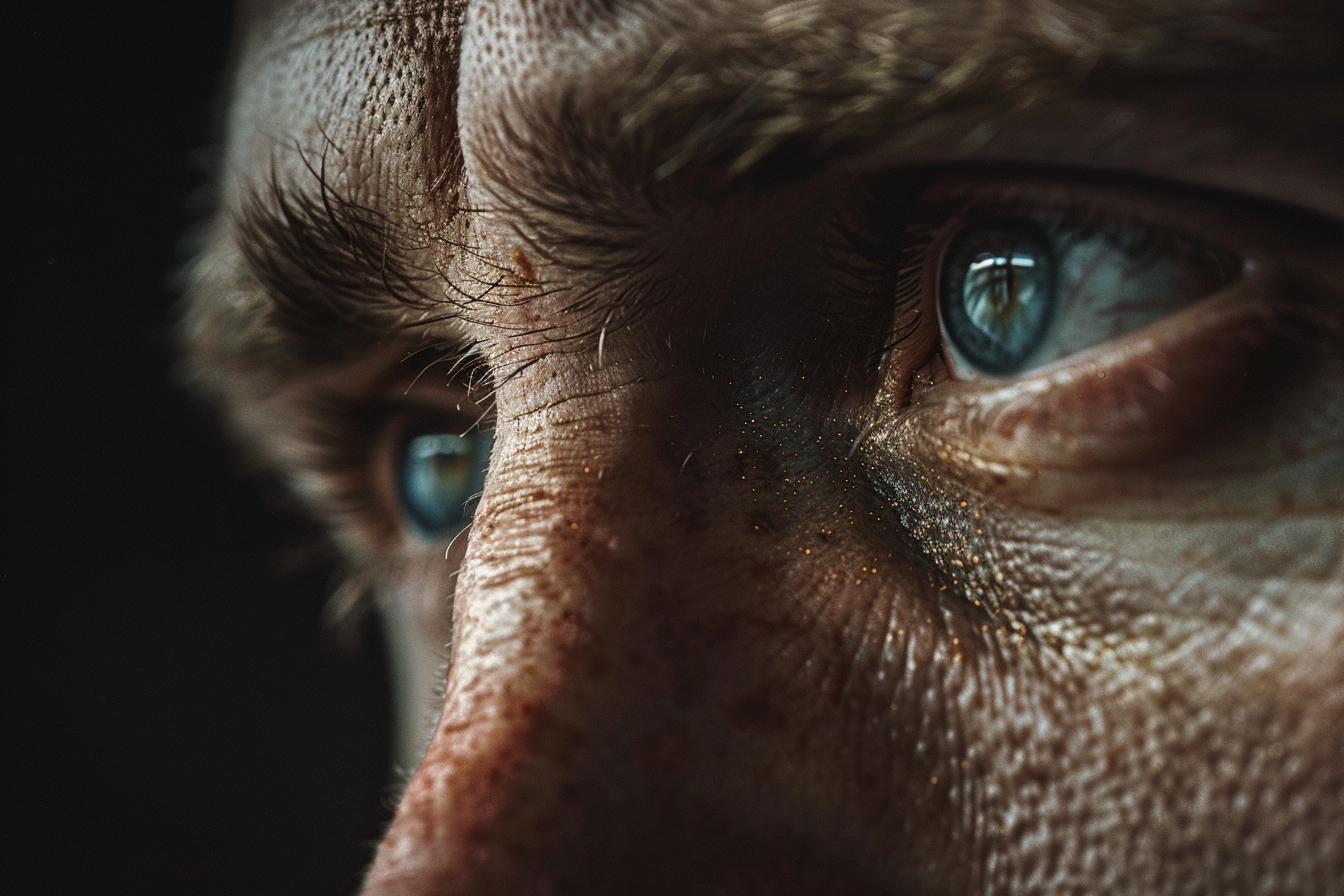
Close up dos olhos de um homem | Fonte: Midjourney
E o tempo todo ele tinha um sorrisinho presunçoso no rosto, como se achasse que eu iria desabar e chorar a qualquer momento.
“Tudo bem,” eu disse, mal ouvindo. “Você pode ter tudo.”
Meu advogado me lançou um olhar que dizia claramente: “Você tem certeza?” Mas eu apenas assenti.
Mike piscou. “Espera, o quê?”
“Eu disse, você pode ficar com ele. Eu não quero nada disso, exceto meus pertences pessoais.”

Uma mulher | Fonte: Midjourney
Ele pareceu atordoado. “Você… você não quer a casa? Ou o dinheiro?”
“Não,” eu disse, me recostando na cadeira. “É todo seu.”
Seu choque rapidamente se transformou em alegria. “Ótimo. Então aproveite esta tarde para arrumar seus pertences. Não é muito, então deve ser tempo de sobra.” Mike olhou para o relógio. “Espero que você saia às seis.”
“Sem problemas”, respondi.

Uma mulher sorridente | Fonte: Midjourney
Ele se sentou mais ereto, seu peito estufado como se tivesse acabado de ganhar na loteria. E eu o deixei pensar nisso.
E isso me traz de volta ao momento em que entrei no elevador do prédio do escritório de advocacia e não consegui mais conter o riso.
Ao sair do elevador, peguei meu telefone. Meus dedos pairaram sobre a tela por um segundo antes de eu digitar uma mensagem rápida: Estou indo para casa para arrumar minhas coisas. Te ligo quando for a hora de fazer sua mudança.
Eu cliquei em enviar e sorri. Hora da verdadeira diversão começar.
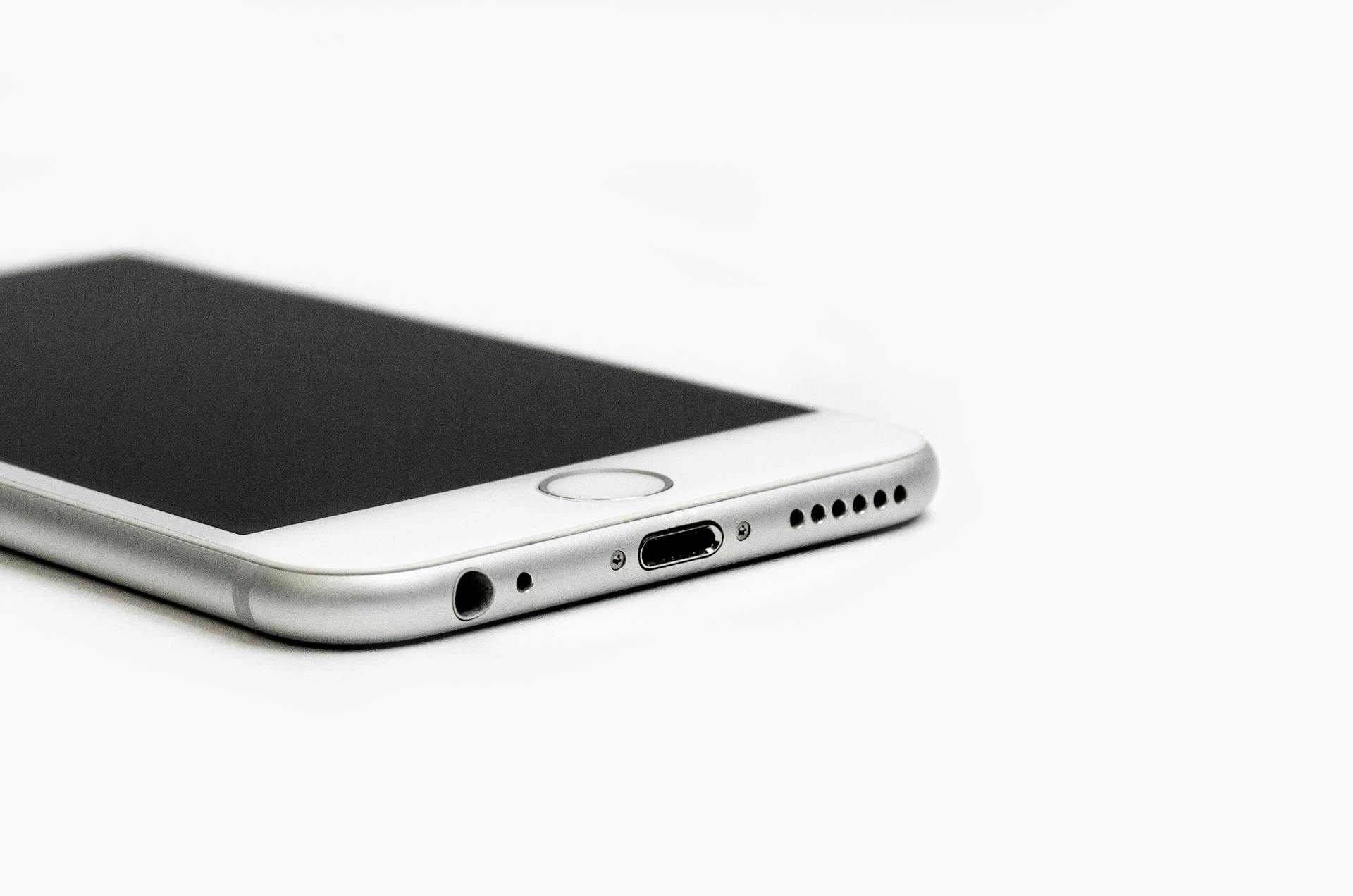
Um celular | Fonte: Pexels
Arrumar a casa foi mais fácil do que eu pensava que seria. Eu não queria muita coisa, apenas algumas coisas pessoais, a maioria itens que guardassem memórias que não foram contaminadas por Mike. A casa era grande demais para nós dois de qualquer maneira, e sempre pareceu mais a casa dele do que a minha.
Eu estava fechando a última caixa quando peguei o telefone para fazer a ligação. Minha mãe, Barbara, atendeu no segundo toque.
“Ei,” eu disse, mantendo minha voz leve. “Está na hora.”

Uma mulher fazendo uma ligação telefônica | Fonte: Midjourney
Houve uma pausa, e então o tom familiar e direto da mamãe surgiu. “Finalmente. Eu estava esperando por esse momento.”
Mamãe não suportava Mike. Ela viu através de sua fachada chamativa no dia em que os apresentei. Mas a melhor parte? Ela nos ajudou a comprar esta casa. Ela era a razão pela qual Mike achava que tinha feito um ótimo negócio nela, e agora ela seria a razão pela qual ele a perderia.
Desliguei, sentindo uma estranha sensação de alívio enquanto olhava ao redor. Eu estava farto de fingir.
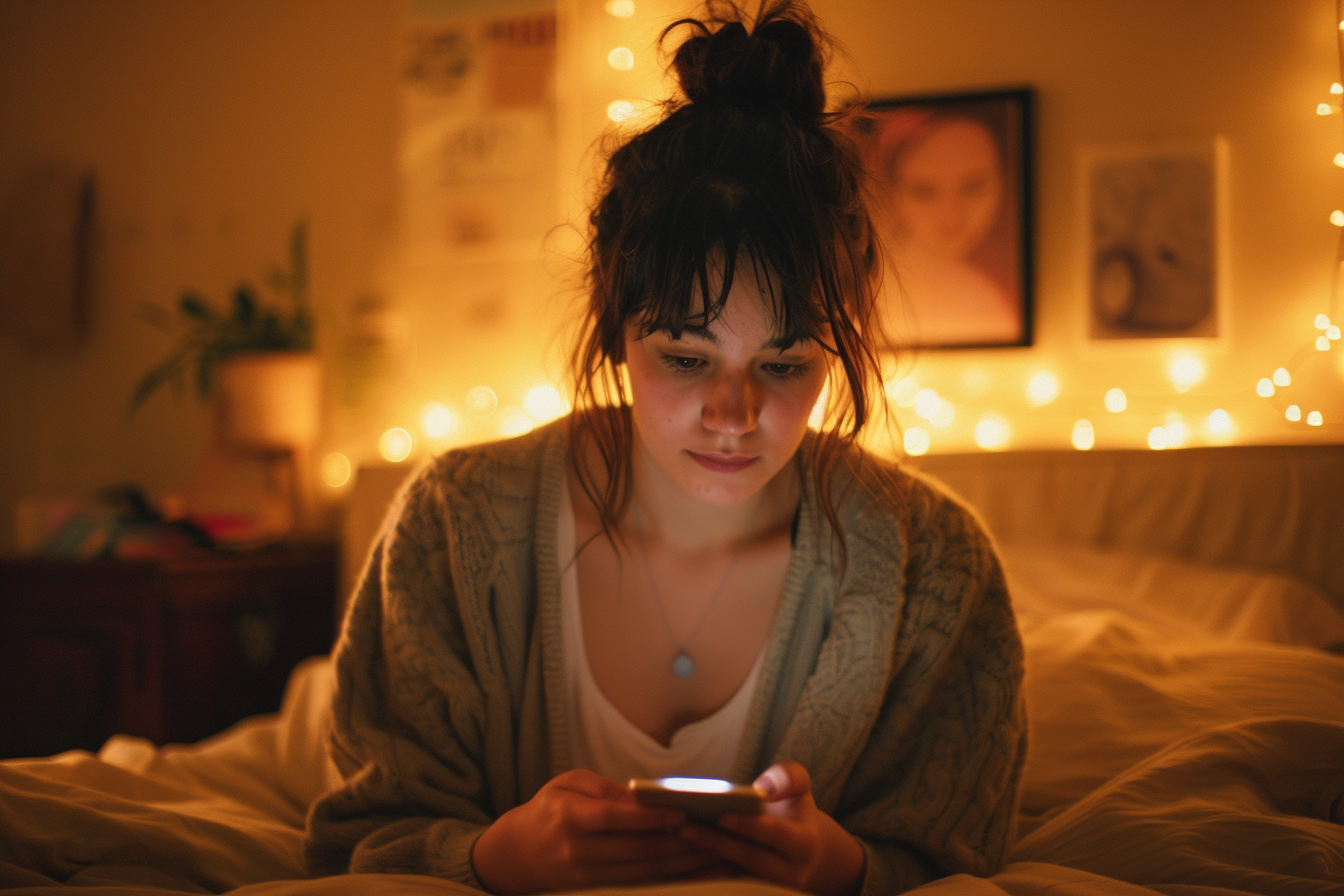
Uma mulher segurando seu telefone | Fonte: Midjourney
Na manhã seguinte, eu estava fazendo café da manhã no meu novo apartamento quando meu telefone tocou. Eu sorri quando o nome de Mike apareceu na tela.
“Olá?”, respondi docemente.
“Você me armou uma cilada!” A voz de Mike estava furiosa, praticamente espumando pela boca.
Coloquei o telefone no viva-voz, pegando um pedaço de torrada enquanto me encostava no balcão. “Desculpe, do que você está falando?”

Uma fatia de torrada | Fonte: Midjourney
“Sua mãe!” ele cuspiu. “Ela está… ela está na minha casa! Ela tomou conta de tudo!”
“Ah, certo”, eu disse, mordendo minha torrada. “Lembra daquele acordo que assinamos quando ela nos deu a entrada? Aquele que a deixa morar lá quando ela quiser, pelo tempo que ela quiser?”
Houve uma longa pausa, e eu praticamente podia ouvir as engrenagens girando em seu cérebro. Eu podia imaginar o olhar em seu rosto, a realização surgindo.
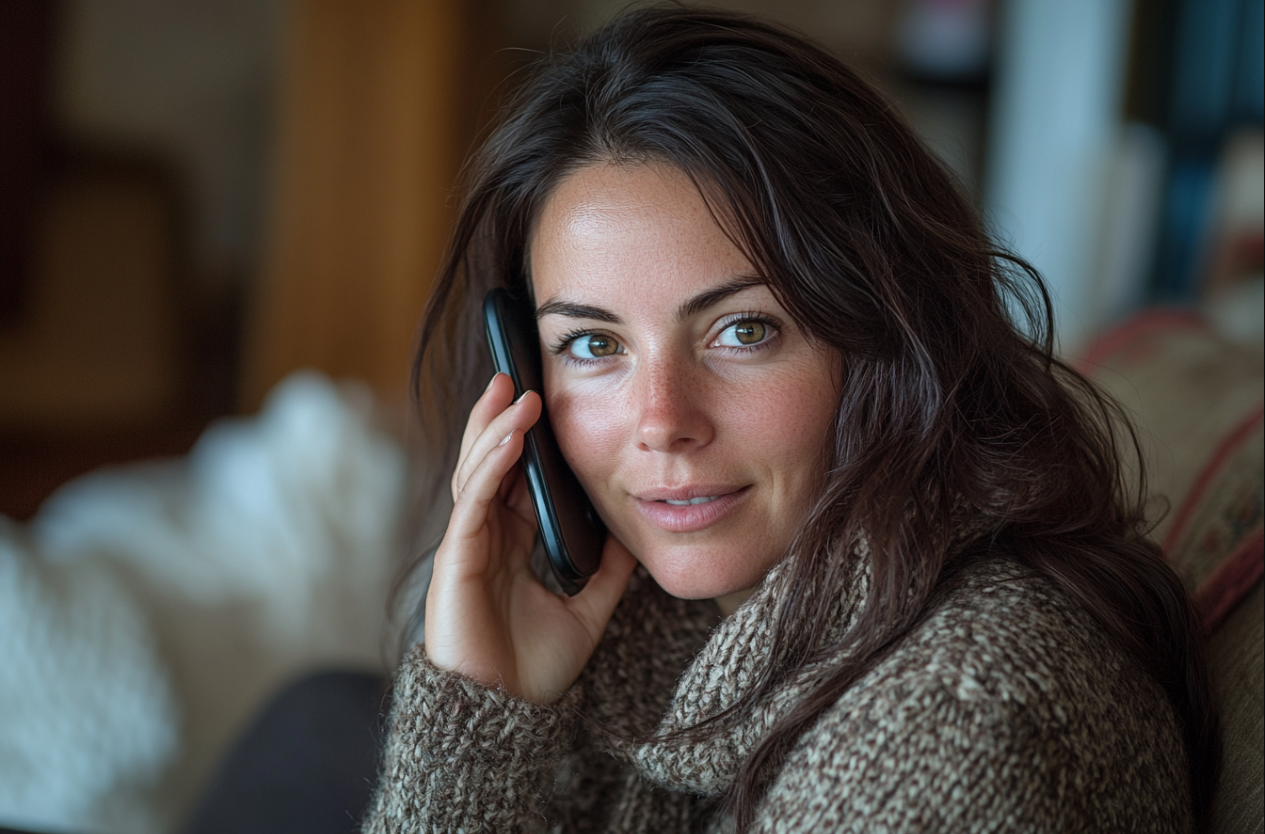
Uma mulher falando ao telefone | Fonte: Midjourney
Ele havia assinado aquele papel anos atrás, cego demais pelo fascínio de uma casa luxuosa para sequer pensar duas vezes sobre as letras miúdas.
“Você! Você me enganou! Isso não acabou. Vou chamar meus advogados—”
Antes que ele pudesse terminar, ouvi a voz da mamãe ao fundo, aguda e cortante pelo telefone. “Michael, é melhor você tirar os pés dessa mesa de centro! E pare de monopolizar o controle remoto!”
Houve um som abafado como se Mike tivesse se afastado do telefone, tentando sussurrar. “Barbara, esta é a minha casa—”

Uma mulher sorridente em uma ligação telefônica | Fonte: Midjourney
“Ah, cala a boca”, interrompeu a mãe, mais alto agora. “A casa é minha tanto quanto sua. E outra coisa, o que há com todos esses salgadinhos baratos? Você sabe fazer compras de supermercado? Eu não estou vivendo de jantares congelados!”
Tive que morder o lábio para não rir. Mike murmurou algo incoerente, sua frustração mal contida, mas antes que ele pudesse dizer outra palavra, eu a ouvi novamente.
“E abaixe o volume dessa TV! Você acha que eu quero ouvir essa bobagem o dia todo? Se você vai assistir a esses programas ridículos de carros, pelo menos abaixe o som!”

Uma mulher sorrindo | Fonte: Midjourney
Houve um estrondo alto, seguido por mais alguns murmúrios, e então o telefone desligou abruptamente. Respirei fundo, sorrindo enquanto me sentava à mesa.
A liberdade nunca foi tão doce.
Aqui vai outra história: quando ouvi meu marido aconselhando seu amigo a estragar deliberadamente as tarefas domésticas, senti uma onda de raiva. Aquele momento marcou o início de uma transformação em nosso casamento, uma em que decidi confrontar sua incompetência armada tratando-o como a criança que ele estava fingindo ser.



Leave a Reply